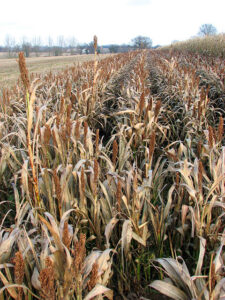Seven years’ biofuels deliberations teaches us ‘put quality before quantity’
By Jos Dings, Policy Team Director at Transport & Environment
April 2015 will enter history as the month in which the EU reversed course on its energy policies in transport. It adopted its long-mooted reform of biofuels policy – especially regarding indirect land-use change (ILUC). The practical implications in the next years may not be so big. But the political and longer-term ones are.
A small recap. In January 2008, ie over seven years ago, before the crisis struck, the European Commission proposed that by 2020 all of the (then) 27 EU member states should source 10% of their transport energy needs from renewable sources. It was clear that this would mostly mean biofuels. Amazingly enough, the member states agreed to subject themselves to this costly and ineffectual policy.
A month later, in February 2008, Tim Searchinger of Princeton University planted the first seed that would eventually lead to last month’s reversal: a paper in Science that for the first time, through a global land-use model, quantified the ILUC effects of large-scale biofuel cultivation, and the associated carbon emissions from ploughing up the land, sometimes preceded by deforestation. As a concept ILUC had been known for a while but full credit to Searchinger here; he was the first to attempt a quantification. And devastating it was: subsequent modelling studies confirmed that including ILUC emissions turn biofuels targets into a very questionable climate policy.
NGOs worked hard to have the new science included in the law but we only partly succeeded – the 2009 law ignored it but instructed the Commission to make a report and, if appropriate, a proposal on indirect land-use change by 2010. Scientists got to work but the Commission did not like the outcome because it showed that many biofuels – especially biodiesel (70% of EU’s biofuel consumption) – were bad for the climate, not good. It took the Commission two more painful and embarrassing years before finally, in October 2012, it published its proposal to cap food-based biofuels to 5% of transport energy by 2020. And it took the Council and Parliament two-and-a-half more years to finally agree.
But here we are. All this is an object lesson in how counterproductive and self-defeating ill-conceived, special-interest legislation can be. All this carries lessons for post-2020 fuel policies, and for biomass policies in general. The lesson is: put quality before quantity.
Meanwhile, the world has changed. Since the publication of the biofuels proposal in 2008, the cost of solar electricity has fallen by a factor of five and the cost of batteries has halved. More cost falls are expected because of the virtuous circle of more scale, more innovation; solar will likely be fully competitive within a decade. In contrast, oil and biofuels are not technologies but resources: the more you use them the more expensive they get – biofuel feedstocks cost the same as seven years ago. Oil and biofuels give windfalls to those who have the cheapest resources and the cheapest land; wind and solar electricity gives it to those with the best technology, to human ingenuity. Photovoltaics is more than 100 times as space-efficient (energy per hectare) as photosynthesis. Moreover, it does not need fertile land; deserts and rooftops will do just fine.
Efficiency and electrification are the way forward for transport. Bioenergy will be a small niche. If that’s the lesson of seven years of blood, sweat and tears, it has not been for nothing.





